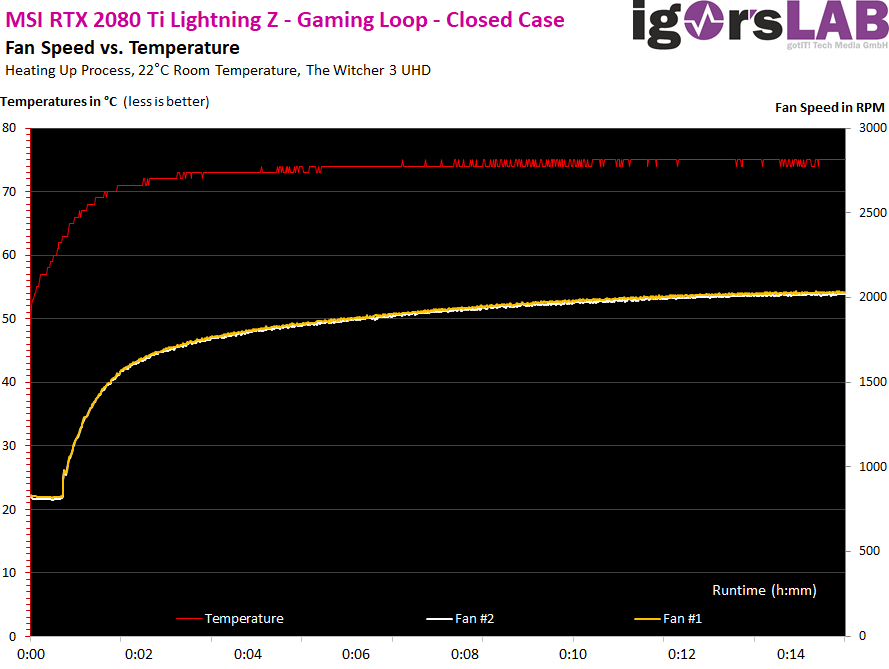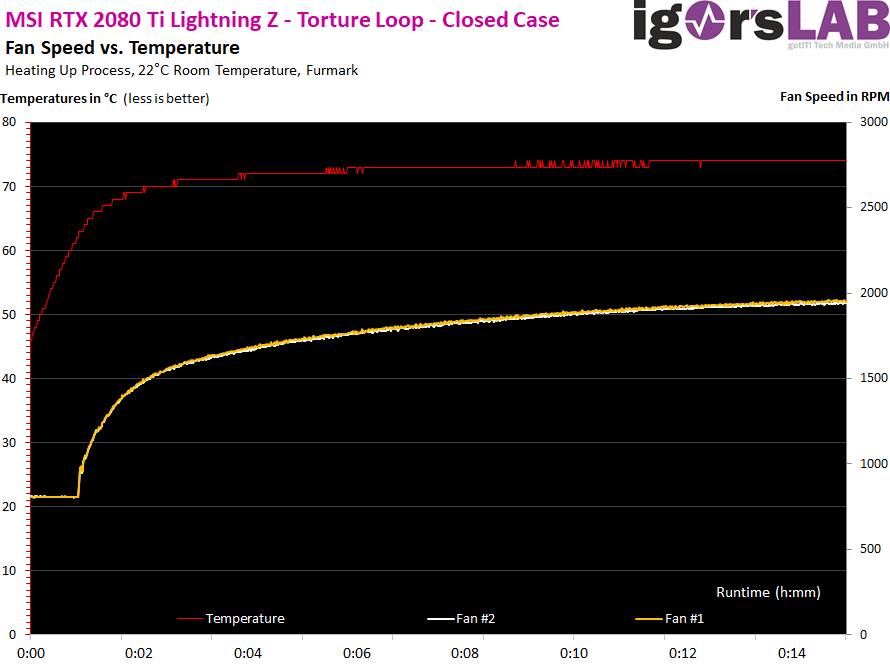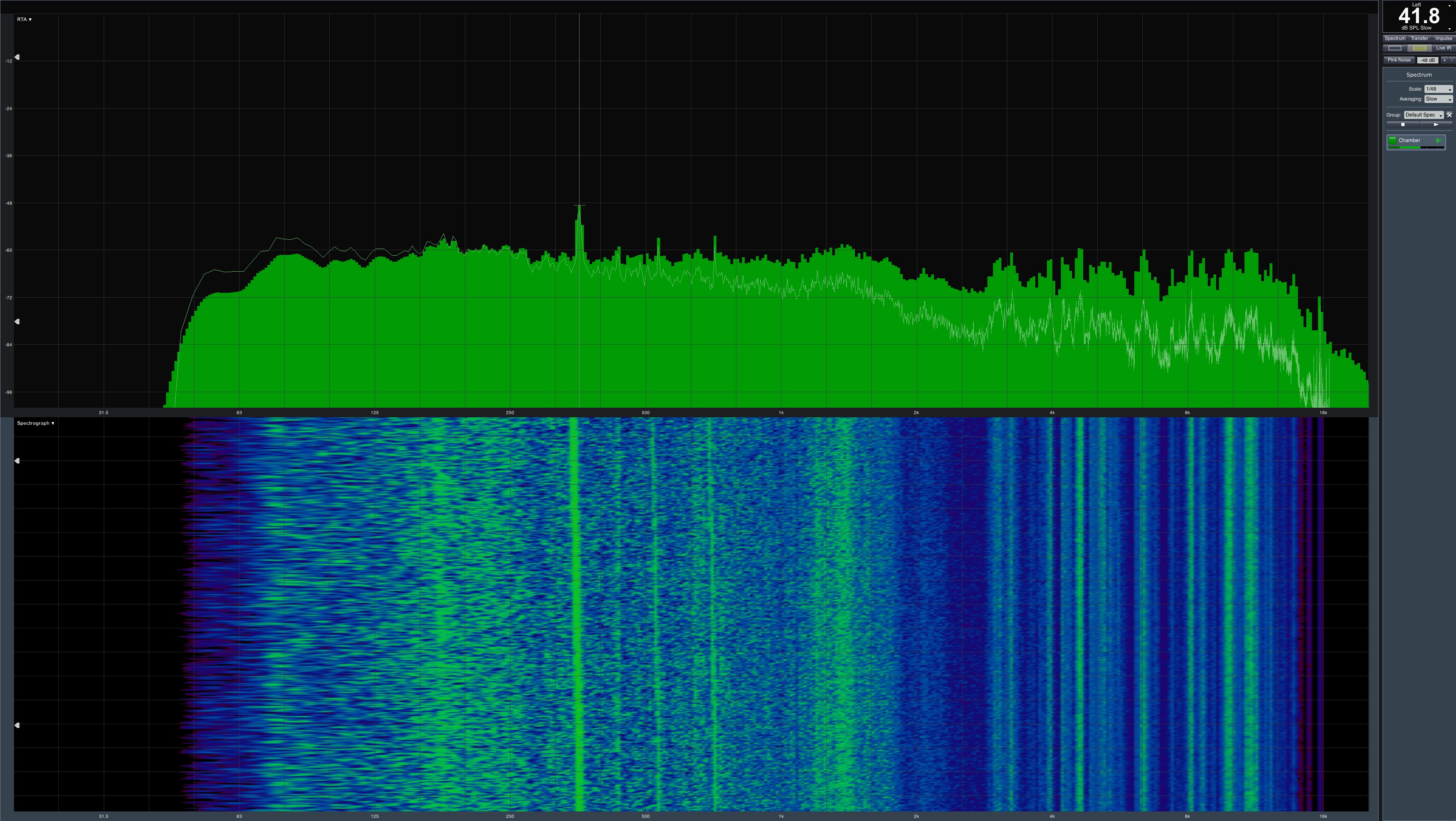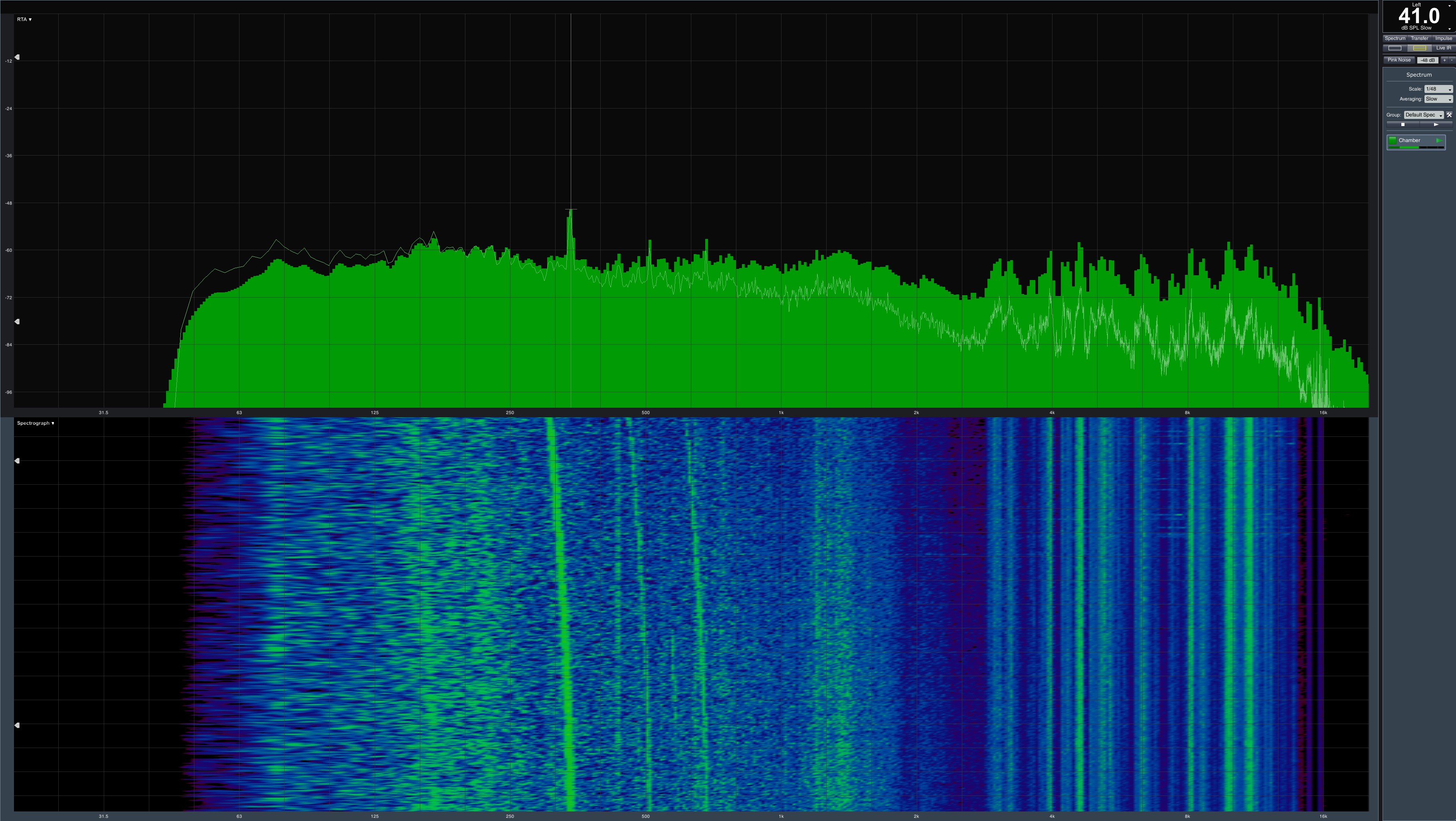There is no real fan stop, the fans always run in the idle with approx. 830 to 840 rpm. The start pulse is replaced by the threshold value for the speed increase from approx. 63 to 64 degrees, which you can also see beautifully by the curves. New to Nvidia’s reference specifications and the Thermal Guide is a separate fan control with (if necessary) two different fan curves. This means that with a card with two fans and more, you as a manufacturer can run each of the two fans individually with an optimal curve
Although the small and large fans have very different characteristics, they run at approximately the same speeds (e.g. 45% and 57% of the speeds), although the final speed is very different. Below we compare the speeds in the closed housing, which is much more practical than the open benchtable.

In the stress test, by the way, the curves look very similar.

Let’s look at the measured values again in direct comparison to the Founders Edition as a tabular listing:
| MSI GeForce RTX 2080 Ti Lightning Z |
GeForce RTX 2080 Ti Founders Edition |
|
|---|---|---|
| Fan speeds Open Benchtable Maximum | 1701 rpm (Gaming, Peak) | 2136 rpm (Gaming, Peak) |
| Fan speeds Open Benchtable Average | 1690 rpm (warmed up) | 2122 rpm (warmed up) |
| Fan Speeds Closed Case Maximum | 2048 rpm (Gaming, Peak) | 2281 rpm (Gaming, Peak) |
| Fan Speeds Closed Case Average | 2042 rpm (warmed up) | 2274 (warmed up) |
| Noise Emission (Air) Average | 41.8 dB(A), Closed Case (Peak) | 41.9 dB(A), Closed Case |
| Noise Emission (Air) Idle | 31.4 | 31.8 dB(A) |
| Sound characteristic / hearing impression | noisy, restrained, light engine noise | rather noisy, hardly lower-frequency shares |
| Coil-feathers/electric noises | Audible at lower fan speeds. | low, only for very high FPS numbers and for load changes |
Sound Spectrum
The measured 41.8 dB(A) is based on the measured 2042 rpm in the closed housing. We have applied the same gaming load to the open set-up in the measuring room, but the fans are limited to approx. fixed in 2040 rpm in order to be able to adjust this value exactly. The result is impressive, because the 360 watts of waste heat want to be disposed of quietly and professionally.
In the protocol of the warm-up, it is very easy to see which frequency ranges are speed-dependent. On the far right you can see the constantly high spikes of the voltage converters and in the middle the demolition noises of the air flow.




































Kommentieren